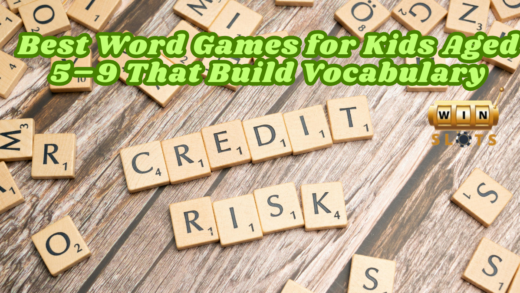During the early years of childhood, the brain is developing rapidly, and young children learn best through hands-on experiences.
Sensory play games for toddlers offer the perfect opportunity to support that development. These games are not just fun—they help strengthen cognitive, emotional, and physical skills by stimulating the five senses: sight, sound, smell, taste, and touch.
This article explores the best sensory activities and touch-based games that boost learning and development in toddlers, all while keeping playtime exciting and safe.
Why Sensory Play Matters for Toddlers
Sensory play is more than just messy fun—it’s a key part of early childhood education. Engaging a child’s senses helps them:
- Improve fine and gross motor skills
- Strengthen cognitive processing and memory
- Develop language and communication
- Build emotional awareness and self-regulation
- Foster creativity and curiosity
By providing regular opportunities for sensory play, parents and caregivers can create an enriching environment that supports healthy growth.
Best Sensory Play Games for Toddlers
Here are some top sensory play games for toddlers that are easy to set up, engaging, and developmentally appropriate.
1. Sensory Bins
What it is:
A sensory bin is a container filled with items that toddlers can scoop, pour, squish, and sort. You can use rice, pasta, sand, water beads, or even cotton balls as a base.
How it helps:
- Encourages touch exploration
- Develops fine motor coordination
- Teaches sorting, measuring, and cause and effect
Example idea:
Fill a bin with dry rice, add measuring cups, small toys, and spoons. Let your toddler dig in, find hidden items, or practice transferring materials.
2. Water Play
What it is:
A classic sensory activity where toddlers use cups, sponges, and toys in a tub or sink full of water. Add bubbles, ice cubes, or colored water for variety.
How it helps:
- Builds hand-eye coordination
- Enhances tactile awareness
- Offers soothing sensory input
Tip: Always supervise water play to ensure safety.
3. Texture Walks (Touch Trails)
What it is:
Create a path using different textured materials like soft rugs, bubble wrap, sandpaper, grass mats, and foam pads. Let toddlers walk or crawl across it barefoot.
How it helps:
- Stimulates touch receptors in the feet
- Builds balance and spatial awareness
- Promotes sensory processing
Bonus: It’s also great for toddlers who are just learning to walk.
4. Homemade Playdough & Clay Play
What it is:
Soft, squishy materials like homemade playdough or modeling clay let kids create shapes, letters, or animals while using their hands.
How it helps:
- Boosts fine motor strength
- Encourages creativity and pretend play
- Offers tactile exploration and stress relief
Add-ons: Mix in scents like lavender or vanilla to engage the sense of smell.
5. Sound Sorting Games
What it is:
Use small objects that make different sounds—like bells, maracas, or crinkly paper. Ask toddlers to shake, tap, or drop them to explore sound variety.
How it helps:
- Supports auditory development
- Improves attention and listening skills
- Teaches differences in pitch, rhythm, and volume
6. Scent Matching Games
What it is:
Fill small containers or cotton balls with various scents—like cinnamon, coffee, or lemon. Let toddlers smell and match pairs.
How it helps:
- Engages the olfactory sense
- Builds memory and concentration
- Introduces new vocabulary
Safety note: Always use natural, non-toxic scents safe for young children.
7. Edible Sensory Play
What it is:
Safe and tasty play options like flavored gelatin, whipped cream, or cooked pasta offer taste-safe exploration, perfect for younger toddlers who mouth everything.
How it helps:
- Allows safe tasting and texture exploration
- Strengthens oral motor skills
- Encourages messy play and desensitization for picky eaters
Tips for Safe and Effective Sensory Play
- Always supervise playtime, especially with small items or water
- Create a designated sensory space to contain messes
- Follow your child’s lead—observe what they enjoy most
- Rotate sensory play materials weekly to keep it fresh and exciting
- Offer positive feedback and describe their actions to build language
Recommendation
Must-Have Sensory Toys and Games for Toddlers in Australia
Best Bedtime Games for Toddlers to Calm and Unwind
Top Animal Learning Games for Kids Aged 3–7
Best Dinosaur Games for Kids That Combine Fun and Learning
10 Fun Offline Games for Kids Aged 3–5
FAQs
Q1: What age is best to start sensory play with toddlers?
A1: You can begin sensory play as early as 6 months, adapting materials to be age-appropriate and safe for mouthing infants.
Q2: How often should toddlers engage in sensory activities?
A2: Daily sensory play, even in short 10–15 minute sessions, can provide huge developmental benefits.
Q3: Can sensory play help with speech development?
A3: Yes, Describing textures, actions, and feelings during sensory play encourages language learning and communication skills.
Q4: What if my toddler doesn’t like messy or touch-based games?
A4: That’s completely normal. Start with dry textures like pasta or fabric and slowly build comfort with messier options.
Q5: Are store-bought sensory toys better than DIY games?
A5: Both are great, DIY touch-based games often offer the same benefits and are more affordable and customizable.



